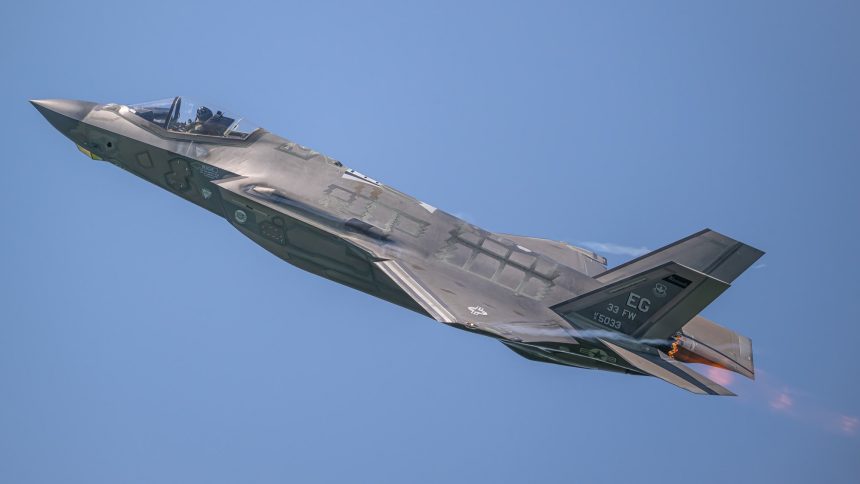Exclusive: Marine and Air Force F-35 Pilots Detail Their Missions During the Exercise Formerly Known as Northern Lightning.
Sentry North, the annual exercise formerly named Northern Lightning, has just wrapped up its two-week run at Volk Field Combat Readiness Training Center, in Wisconsin, and at Alpena Combat Readiness Training Center, in Michigan.
The core structure of previous Northern Lightning exercises has not changed under the new name, says Exercise Director Lt. Col. Michael Cady. “It is effectively the same exercise, but with year over year improvements, and growth, that have substantially increased the training value and options for participating units,” he explained.
Lt. Col. Cady also clarified two hotly debated questions that all regular observers of the exercise were asking. Firstly, why the name change of the exercise from Northern Lightning to Sentry North? Secondly, why the date change from the second week in August to the first week of June?
“The name was changed to create uniformity in exercise nomenclature,” said Lt. Col. Cady answering the first question. “The three major Counterair exercises, the Readiness Training Program produce, are the SENTRY series, consisting of NORTH (Volk Field/Alpena Combat Readiness Training Center), SOUTH (Savannah/Gulfport CRTC’s) and ALOHA (Hickham Air Force Base, HI). All three produce similar training opportunities, but with different venues/capabilities and dates.”
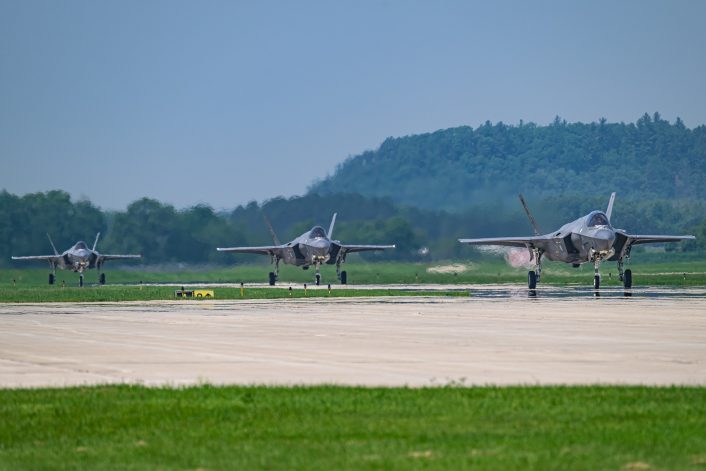
“The date was changed to better support the Air Force – Force Generation Cycle, that the Air National Guard fall under,” said Lt. Col. Cady answering the second question. “The cycle produces combat ready forces, generally on an Oct-Apr and Apr-Oct cycle. Sentry North’s June date will enable forces to complete certification with enough time between end of exercise and deployment in October.”
Sentry North 2025 focused on operating in a contested environment with electronic jamming, adversary red air aircraft, and simulated surface to air threats. Similar to last year’s Northern Lightning, the presence of aircraft actually being based at Volk Field for the two-week exercise was scaled down to two F-35 squadrons. These were the F-35Bs of Marine Fighter Attack Squadron 225 from Marine Corps Air Station Yuma, Arizona, and the F-35As of the United States Air Force’s 58th Fighter Squadron from Eglin Air Force Base, Florida.
In addition to the F-35 squadrons based at Volk Field, former Israeli Air Force F-16As from civilian contracted adversary air operator Top Aces, from Mesa AZ, were stationed on base for the length of the exercise. The count of fighter aircraft on the Volk ramp were: eight F-35As from Eglin Air Force Base, seven F-35B’s from VMFA-225, “The Vikings”, and four F-16As from Top Aces.
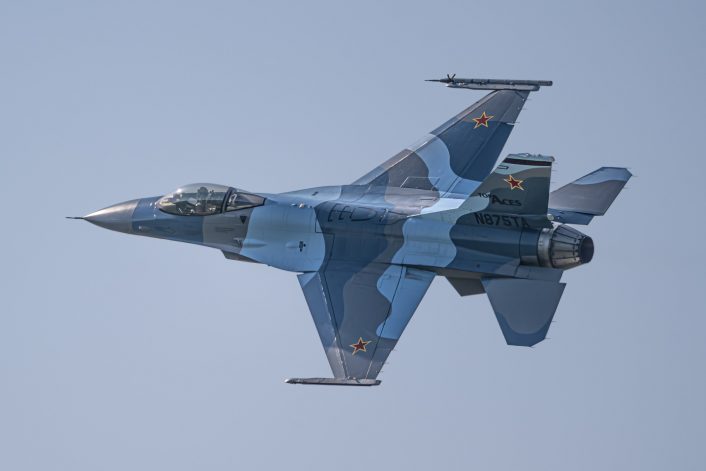
The relatively low count of centrally based fighters at Volk Field is certainly a noticeable but understandable trend in training exercises, whereby dispersing forces, assets and command elements across multiple locations has become the standard. As Lt. Col. Cady commented, “The DoD has continued to shift focus to distributed operations, which brings new logistical challenges, communication difficulties, etc. It is critical to simulate these difficulties so our force can train to solving tactical problems in an environment that more closely replicates combat operations around the world, and especially, in the Pacific theater of operations”.
Clear demonstration of distributed operations in Sentry North is evident by reviewing the actual participant list. The players were a healthy mix of 4th and 5th generation fighter aircraft, staging from diverse locations. Airlift and aerial refueling tanker participation was robust, with the KC-130s from VMGR-234, Ft. Worth, and VMGR-352, MCAS Miramar, providing the drogue refueling platform for the F-35B of VMFA-225.
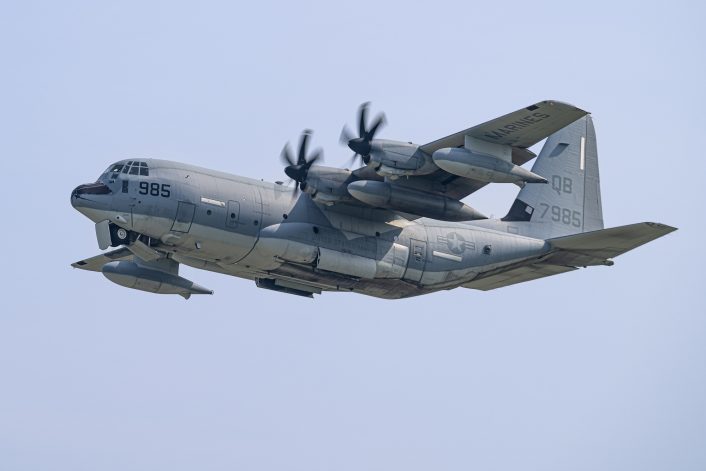
Participant List for Sentry North 2025
- 115 FW/176 FS (ANG) from Madison, WI
- 103 ACS (ANG) from Orange, CT
- 121/127/128 ARW (ANG) from Multiple
- 122 FW/163 FS(ANG) from Fort Wayne, IN
- 126 ARW/126 FSS (ANG) from Scott AFB, IL
- 127 FW/107 FS (ANG) from Selfridge, MI
- 128 ACS (ANG) from Volk Field CRTC, WI
- 132 DTOC (ANG) from Des Moines, IA
- 133 AW/133 OG (ANG) from Minneapolis, MN
- 148 FW/179 FS (ANG) from Duluth, MN
- 156 WG/156 CR (ANG) from Carolina, PR
- 182 AW/182 OG (ANG) from Peoria, IL
- 187 FW/100 FS (ANG) from Montgomery, AL
- 193 SOW/148 ASOS (ANG) from Middletown, PA
- 194 WG/116 ASOS (ANG) from Tacoma, WA
- 255 ACS (ANG) from Gulfport CRTC, MS
- 266 RANS (ANG) from Mt. Home AFB, ID
- 33 FW/58 FS (USAF) from Eglin AFB, FL
- 3rd MAW/VMFA-225 (USMC) from Yuma, AZ
- VMGR-234 (USMC) from Ft. Worth, TX
- VMGR-352 (USMC) from MCAS Miramar, CA
- 419 FW/466 FS (AFRC) from Hill AFB, UT
- Alpena CRTC Augmentees (ANG) from Alpena CRTC, MI
- MACS-24 (USMCR) from Virginia Beach, VA
- Top Aces (Attached to 33FW) from Eglin AFB, FL
- 114 FW/175 FS (ANG) Sioux Falls, SD (Participated in two missions during the second week
- Volk CRTC Augmentees (ANG) from Volk Field CRTC, WI
The Aviationist was once again fortunate to interview three Sentry North participating pilots at Volk Field, in order to gain a much more comprehensive understanding of the operations, training scenarios, challenges faced and personal takeaways from the ever evolving Sentry North exercise.
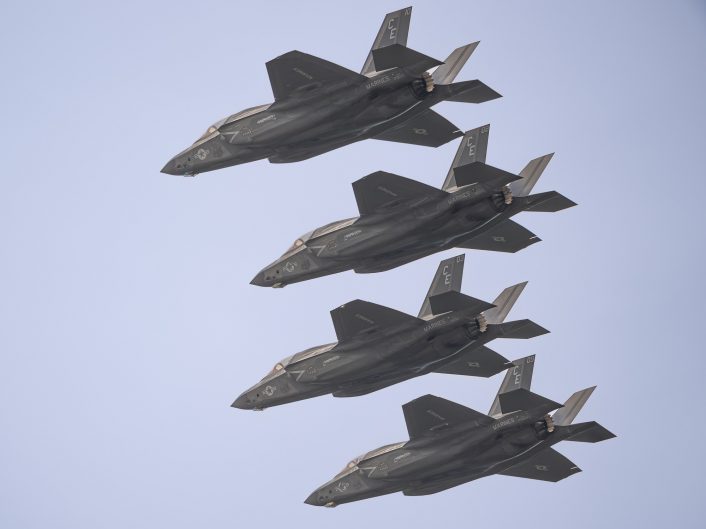
Interview with VMFA-225 F-35B pilot Captain Alex Robertson
The Aviationist: Can you please tell us where you are from, school attended, aircraft flown prior to the F-35B, hours in the F-35B, and total flight hours.
Sure, Captain Alex Robertson, originally from Arlington, Washington, about an hour north of Seattle. I went to Central Washington University, flew the T-6 and the T-45 as the primary and advanced trainers prior to flying the F-35. F-35 being the only fleet airplane I have flown. I have about 400 hours in the F 35, about 600 total military hours, and about 1000 total flight hours, including some civilian.
So straight from advanced trainer to the F-35B. Okay, can you please tell us why you are participating in Sentry North? What’s your primary mission here, for yourself and for VMFA 225, during the exercise.
Ultimately, coming to Sentry North is a great opportunity to plan and execute with the Air Force Air National Guard, doing large force exercises, training and planning, executing against advanced threats. So ultimately, that’s why we came here. For me as a pilot, going through some upgrade items, as well. Then, just getting more reps. at the planning execution cycle, for large force exercises.
Is this your first exercise participation?
I participated in Air Wing Fallon in 2023. That was the first type of detachment large force exercise that I was part of.
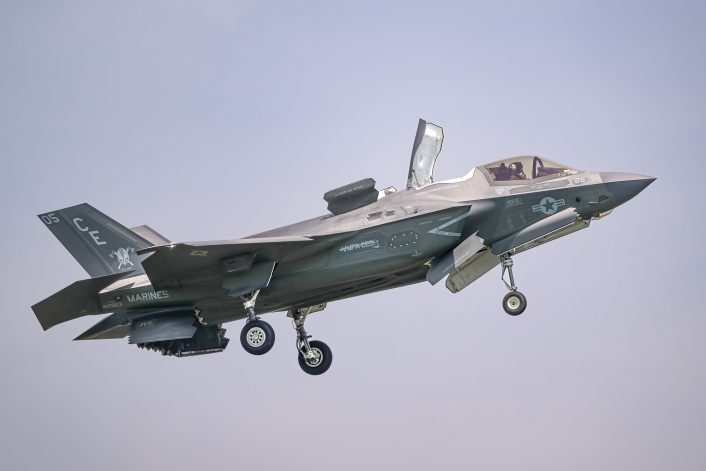
How does participating in Sentry North help VMF-225 prepare for real world contingencies?
Well, back at home station Yuma, we don’t really have the organic assets to do large force exercises on our own. Coming here allows us to train with the Air Force Air National Guard with huge large force exercises, and allows having our newer pilots, experience more advanced flights, which helps our readiness and training for the next conflict.
Got it, thanks. Can you describe some of the scenarios that you’re flying at the exercise? How often will you fly during the two weeks? Do you fly both blue and red air during the two weeks?
We do a lot of anti-air warfare. So, doing Offensive Counter Air, Sweep Escort, then we’ll do some Defensive Counter Air as well. We do participate primarily as blue air, but we have been doing some red air as well, which is beneficial providing an F-35 on red, which is obviously much more advanced than an F-5 or other adversary aircraft that we normally fly with.
Can you talk about your coordination with the Top Aces?
Sure, so, we’ll do the red air planning cycle with the Top Aces or the other F-35s, F-16s, that are flying red air as well. Then, we’ll do a mass brief with blue air and red air together, and then a red coordination brief, and then we’ll go out to the airspace together and fight there. The Top Aces are the lead for red, they are directing and telling us what to do and the planning. Approximately 25% of our sorties are red air.
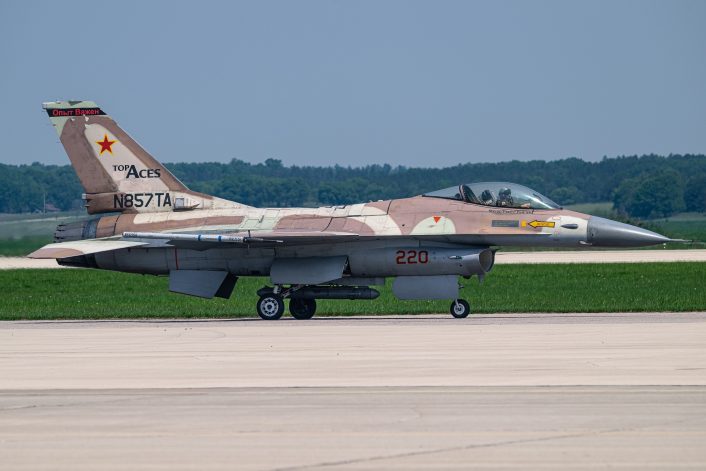
How often will you fly during the two weeks?
Probably about 4 or 5 times. Then, each of those come with a mission planning cycle, generally, the day prior.
Can you describe the data sharing between the platforms of the F-35B and working with the Air Force F-35As from the 58th Fighter Squadron, as well as the 4th gen. fighters that are participating?
Sure, we operate on the common data link between F-35s, thus we are able to share data with them as well as 4th gen. fighters.
Staying on the data topic, there’s so much data coming into the F-35B, therefore, how do you manage that, how do you not get overloaded with all that’s available for you?
Good question, I think that was probably one of the more difficult things, while learning to fly the F-35, was the information overload, because it does give you so much information. You have to learn, (not necessarily to filter everything out or non-important things out), but really how to use the information that you’re getting. Therefore, it just comes through repetitions and participating in exercises like Sentry North, is really where you are able to hone that.
What’s the most challenging aspect of flying the F-35B in a large force exercise such as Sentry North? And what lessons do you hope to take away from the exercise?
I think one of the more difficult things with the B in particular is the somewhat limited fuel load, as compared to the F-35A and F-35C, where having a tanker is almost required, especially for further transits. Thus, the fuel planning, the mission planning as well, that goes with that is probably some of the more difficult pieces to it.
Can you talk about a unique characteristic of Sentry North and what lessons do you hope to take away from the exercise?
Firstly, one of the strengths of Sentry North is their customer focus. The planning coordinators reached out months ago, asking what training do we want to do. They then offered to shape some of the scenarios towards what we need. Regarding lessons, it would be the integration with a large force, and experience working with the Air Force and their way of conducting business.
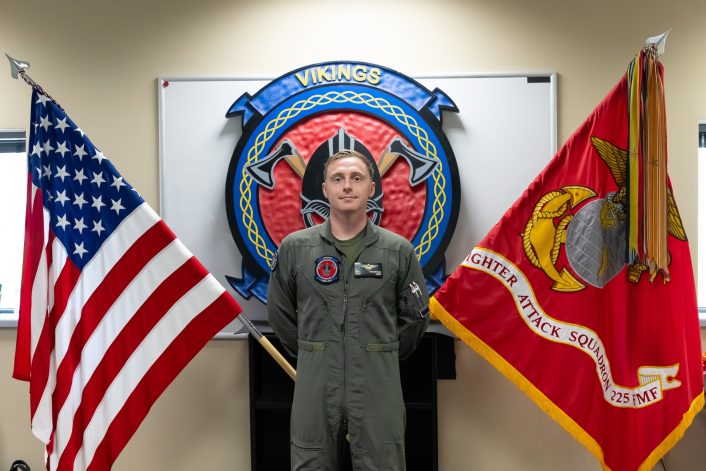
Interview with Lt. Col. James Braudt, Commanding Officer of VMFA-225
Next up, The Aviationist sat down with Lt. Col. James Braudt, Commanding Officer Marine Fighter Attack Squadron 225.
Can you please tell us where you are from, school attended, aircraft flown prior to the F-35B, your hours in the F-35B, and lastly your path to becoming Commanding Officer of VMFA-225?
Lt. Col. James “Scooby” Braudt. I am from Dallas, Texas. I went to the Merchant Marine Academy in King’s Point, New York. Back in 2010, I was designated a Naval Aviator. Completed training in the AV-8B Harrier with Marine Attack Training Squadron 203 and reported to MCAS Yuma for assignment with Marine Attack Squadron 311 in March of 2011. I transitioned to the F-35B in July of 2015 and reported to Marine Fighter Attack Squadron 121 at MCAS Yuma.
In 2017, graduated from Weapons and Tactics Instructor Course. In Sept. 2020 I reported to Marine Aviation Weapons and Tactics Squadron 1 (MAWTS-1), instructing in both the F-35B and F-35C. In August 2023, joined Marine Fighter Attack Squadron 211 as the Operations Officer. In December of 2024 I took command of Marine Fighter Attack Squadron 225. I have 1,110 hours in the F-35B/C, 500 hours in the AV-8B and 60 hours in the F-5. Total flight hours are slightly over 2,000.
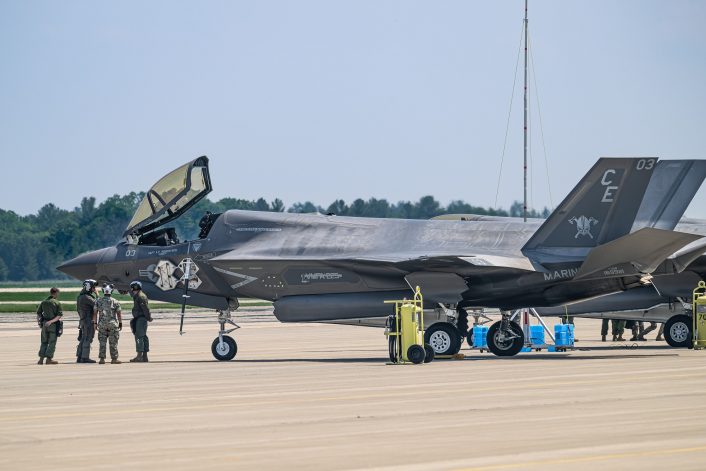
What was it like transitioning from the AV-8B to the F-35B?
Sure, the transition from the Harrier to the F-35. In terms of flying the F-35, it is a dream to fly. It does most things for you. It’s so easy to fly that it’s almost like a video game.
In some ways, it’s insidious because it’s a little bit too easy to fly, you feel like you’re in a Halo video game with all the screens and everything, and it’s so smooth. Always trim to one G, whereas the Harrier was not like that. It was a very honest airplane. Certainly, more challenging to fly, and I wouldn’t say unforgiving. I would just say honest. It will tell you if you screw something up and you need to fix it, if you do something wrong with the nozzles, or the flaps, or act too aggressively with it. It was a real pilot’s airplane.
In the transition, in the early days of the F-35, we were Block 2B. At that time, we were limited to -2 to 5 and a half Gs. We had limited weapons loadout, and I had just come off an Afghanistan combat deployment, 18 months prior. Thus, there was some frustration where they were making all these gains and improvements to the Harrier and the F-18, and then getting the F-35, it was not optimized for night operations, very limited utility. However, when we had the Gs expanded, and when we went to our first Red Flag, we were able to unleash some capabilities of the airplane and truly see it the way it’s meant to be flown, it was absolutely an eye opener. Everyone became an immediate believer.
Can you please tell us your impression of flying the C model versus flying the B model F-35?
In terms of impression of flying the C and how it compares to the B, most people will probably tell you, obviously, the biggest difference is fuel loadout. I love having all that fuel. Flying it is superb. The taxiing, you might have heard about that, it is incredibly rough.
Yes, I have heard about the bumpy taxiing in the C model. Your feedback is in-line with all others who have flown both models.
Back to the flying of the C, and B. The C has the larger wingspan, and as I mentioned, under the hood, everything’s the same. When I was doing all the switching back and forth between the models, you jokingly would be like, which one am I in again, however, you look outside and see your large wingspan and then you know for sure.
Turning, with a bigger airplane, with the bigger wings, it has a little bit better grip. Therefore, I would say the Charlie turns at 40,000 ft, the way the Bravo turns at 30,000 ft. However, as I mentioned before, fuel is the biggest difference, it’s a real game changer.
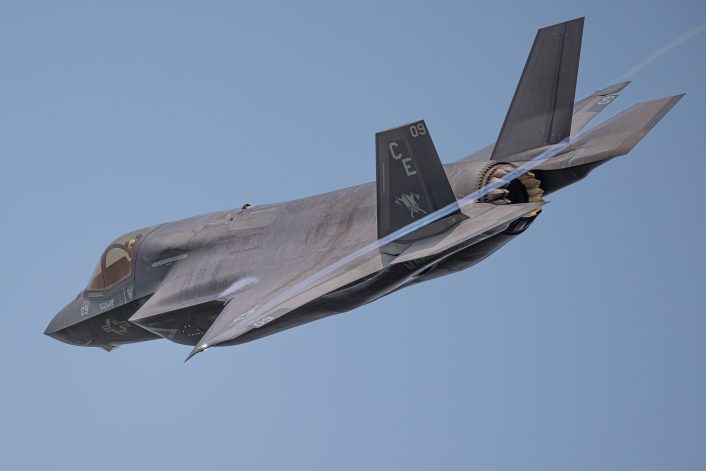
Thanks for sharing that information. Now, regarding Sentry North, what is your deployment package for the exercise?
We have seven F-35Bs here, 153 Marines and sailors and six civilians here. Two KC-130s on the ramp. They’re not attached to us, but they are in support of us.
As far as your pilot roster, what is the makeup of the pilots involved in the exercise?
We have 17 pilots here. We’ve got new guys who have been in the squadron less than two months. We’ve got experienced guys in the squadron, going on almost three years. The entire squadron was deployed on the USS Boxer last year, returning in November 2024. There were a lot of personnel changes after the deployment, so with all of that we were trying to find an exercise that would fit into our regrowth cycle, for the squadron.
This one is perfectly timed in the early summer. It’s also a good stepping stone towards more advanced exercises like Red Flag at Nellis AFB. Thus, it’s great timing for us, and that’s why were focused on this one. We took everybody, and there are a lot of new faces. It’s also the right blend of experienced and junior folks.
For Sentry North, can you tell us a little bit about what the primary mission objectives are for VMFA 225?
We’re doing a lot of flight lead upgrades, a couple of mission commander as well. We also have a couple of pilots from guest units that need mission commander upgrades, so helping them as well. As Captain Robertson said, we’re focusing on offensive counter air, suppress enemy air defenses, defensive counter air, those are the big ones.
In addition, sweep and escort and then an internal training objective, that’s not really part of the larger exercise. EABO, Expeditionary advanced base operations/ Distributed aviation operations. Air force frequently calls it ACE, Agile Combat Employment. In the 3rd Marine Aircraft Wing, we call it hub, spoke, node.
Our hub is back in Yuma. We’re still reaching back to them for parts coordination, logistics. Spoke is Volk Field, and then our node is Fort McCoy, which is a small Army airfield less than 50 miles to the west of here. It’s roughly a 4,700 foot runway. We’re going to land there, hot load, hot fuel, so while fuel is plugged into the airplane, the airplane is still running, we have Marines loading missiles, and then get out. This is really highlighting the capabilities of the F-35B in particular. So, while the F-35C has 7,000 lb more fuel, they can’t do that, they can’t get into an austere site that’s less than 6,000 ft unless there’s an arresting gear.
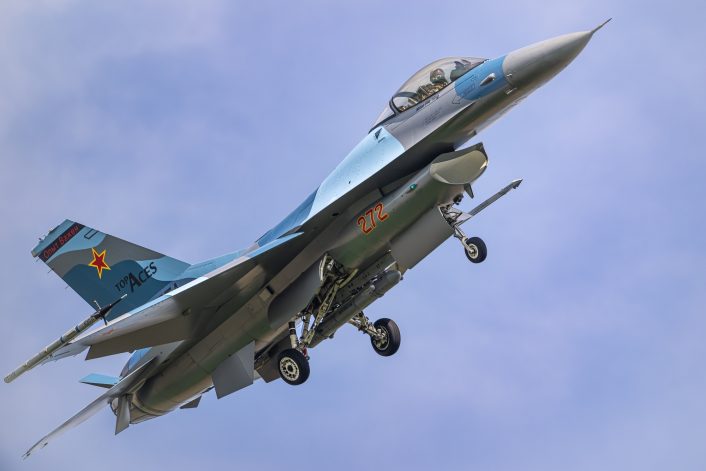
What lessons learned from previous exercises are being tested or implemented at Sentry North?
That’s a good question. With the pacing threat that we’re facing, the tactics are constantly evolving. For example, I went to a recent exercise, I was flying with a sister squadron, the tactics have already updated since then, but going back to the tri-service agreement, since the Air Force, Navy, Marine Corps all fly the same tactics, we all speak the same language, and it’s now nine months later, and we’re still all on the same page. We’re constantly keeping pace and flying the new tactics.
Lastly, what lessons do you hope to take away from Sentry North?
I would like my ready room to learn more about joint interoperability. Learn more about large force exercises, and flying them. How to be professional in the brief and the debrief.
There’s great benefit and advantage to getting away from home field, just because it forces you to move, how are we going to debrief, what’s our logistics and sustainment look like. It is 1400 miles from Yuma all the way up to Wisconsin. There’s benefit in that. Learning how to land at different airfields, learning how to talk on the radio, to different people, learning how to get out of an unfamiliar airspace. The other thing that we really want to emphasize and learn from is the distributed aviation operations, we sometimes call it distributed STOVL operations. The F-35B is the only aircraft that can offer this. This is what the MAGTF (Marine Air-Ground Task Force) offers to the joint force, is the ability to land on austere site or an expeditionary runway. What we’re emphasizing is get in, get fuel, get weapons, and get out quickly and quietly.
Last point I would emphasize is the STOVL capability and the expeditionary nature of our operations. There is a drawback in the F-35B of less fuel, however, that is paid off with its flexibility, while still being as survivable and lethal as the F-35A and F-35C. That’s the trade-off.
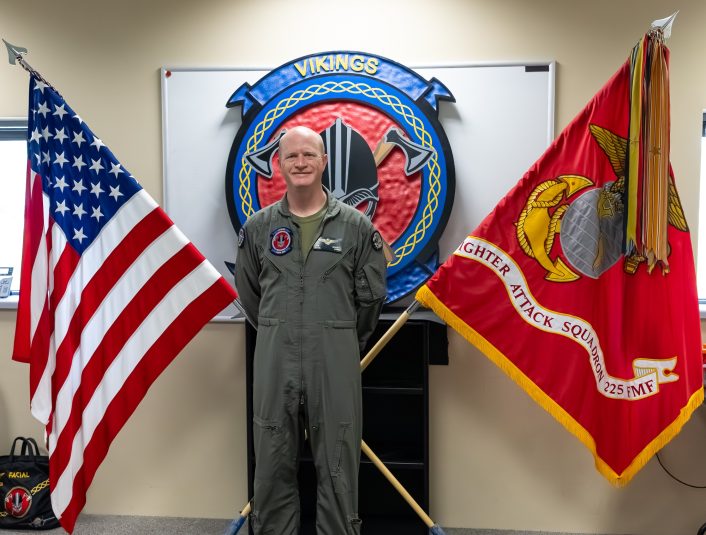
Interview with United States Air Force Major Ben Mix, 58th Fighter Squadron F-35A Pilot
Closing out the interviews, The Aviationist spent time with Major Ben Mix from the 58th Fighter Squadron, Eglin Air Force Base.
Please tell us where you’re from, school, aircraft flown prior to the F-35A, flight hours in the F-35A, and total flight hours.
My name is Major Ben “Techno” Mix. I grew up in Orlando, FL, and then went to school at Villanova University. I commissioned through the ROTC program there. After pilot training. I went to Tyndall Air Force Base to be an adversary air pilot in the T-38, the A model. Flew that for a couple of years, then went over to Eglin AFB for the F-22 B-course. Then moved to Hawaii, for a hardship tour out there, flying the F-22. In three years, time, I moved to Eglin to do the transition to Instructor Pilot Upgrade School, which took a little under a year. I’ve been there for two and a half years.
Flight hours in the F-35A are approximately 250, and total flight hours is just shy of 1000.
Interesting that you went from the F-22 to the F-35, was that your choice, and my most basic pilot question, what is your favorite aircraft to fly?
Yes, it was my choice, and favorite is tough, like picking a favorite child.
So, I would say it depends on the mission set. For BFM and any sort of air to air, obviously the Raptor is far superior in terms of maneuverability and weapons. For those type of missions, I do, miss the Raptor. However, for overall air in terms of OCA, SEAD, those type of things, I like the F-35 better. What I really like about the F-35 that I didn’t recognize, is the amount of fuel that that it holds internally. It holds a lot of fuel, to go pretty far. I enjoy that.
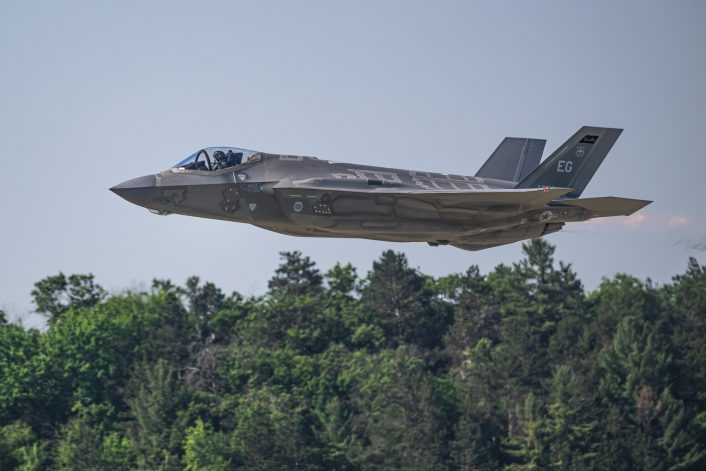
Can you talk about what concepts you’re gaining expertise on while you’re participating in Sentry North, and what is the primary mission for you and the 58th, during the exercise?
Our primary mission in the 58th is to graduate our B-course students with the best quality training that they can get. That’s why we brought them up here, because we can do these types of missions back at home station, but, they’re nowhere near the complexity and the amount of training that we get up here is awesome. So, our primary mission up here is, OCA (Offensive Counter Air), we’re doing some DCA (Defensive Counter Air) as well, but, integrating with all the other F-35s, other assets, C2, ISR and showing our students how all of it comes together into the big air war is very valuable for them.
What’s the blend of instructors versus the B-course students?
When we fly it is about a 1:1 ratio. We brought roughly 20 pilots. 40 on our operations team and about 120 for our maintenance and operations.
As far as integration with the Marines and their F-35Bs, can you talk about the integration you’re doing with them for this exercise?
Absolutely. So, another great part of the exercise is integrating with other partners, especially other partners, flying F-35s. Flying closely with them, since they’re in F-35s as well, our jets can talk to each other. We get to test all that out, which is a great part of the exercise as well, testing those connections because they don’t always work the first time. We have some lessons learned on that as well, however, it’s plug and play. One day they’ll do the escort, we’ll do strike, and then the next day, we’ll do escort, they’ll do the strike. So, we’re all fighting in the same missions together.
What are the biggest challenges in transitioning from your training to the operational scenarios?
Deconfliction is a big challenge. Yesterday, I think we had 32 jets on blue air. Therefore, stacking all of them safely, within a 50-mile airspace is a huge deal, obviously safety of flight being the number one priority. Getting that correctly and then just coordinating with 32 players. What’s really cool about this exercise is that a lot of them are off station. Therefore, kind of realistic in a future scenario, we’re probably not all going in the same place talking to each other. So having to do that, working through the IT issues of getting them on board, getting the plan sent out to everyone and then safely executing is a challenge, but a good one.
What kind of feedback do pilots get after each mission (students and instructors). How does it compare to the debriefing process back at Eglin?
After each mission, we’ll come back and do what we call a shot val. We’ll pair our shots, red air pair their shots, the SAM operators will pair their shots, and then we’ll take our bomb coordinates, then we basically see, how did it go? How many people survived? How many people died? Did we strike our targets? We do that all in one big shot val., with our off station guys as well. That is pretty similar to what we do back home, but it’s on a much larger scale. (Obviously, back home we don’t have 32 blue aircraft and all the missiles). From there we can go back and review, we hit half our targets yesterday, why did we miss the ones that we did and could we have done more? That’s, really where all the learning occurs.
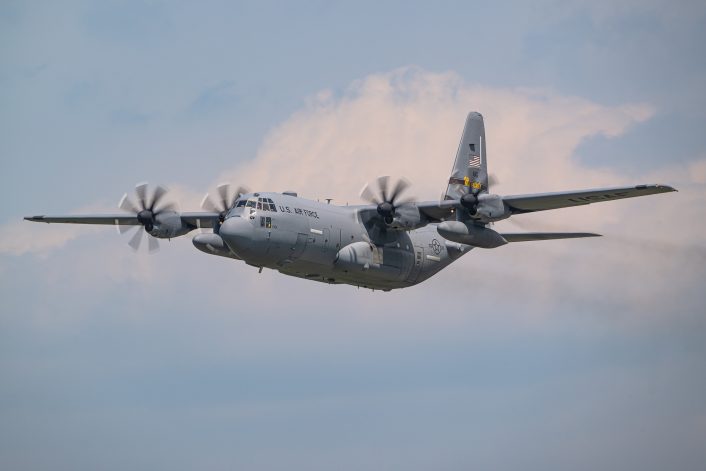
How many of the students come up here and get humbled and challenged by the size of the exercise? Overwhelmed, with just the number, the scale of what’s going on?
It is probably exponential with the number of jets that you have, how that drains your SA (Situational Awareness). Back home, with just a four ship, and maybe, a six ship, you can talk on the radio. If you have a question, you can get that question answered. It’s pretty easy. However, when you have 32 people trying to talk on the same frequency, that drains your SA a lot. So, things that were simple back in our home air stations, start becoming more and more complex and more draining, especially as you’re trying not to hit other aircraft in the airspace. I’d say, it’s definitely, exponentially more difficult, which is fantastic to give them that experience, because once they graduate here, this is what they’re going to be doing. So, giving them this experience has been fantastic.
Last question for you. What do you like about this particular exercise from some of the other, larger ones, like a Red Flag?
What I like about this exercise, sort of selfishly, is the amount of F-35s that we have. Of the 32 aircraft we flew yesterday, 20 were F-35s. That really gives us a chance to test our integration, and the flexibility of having F-35 on an OCA. That is what I like about this exercise, versus other exercises, which have all kinds of different platforms, which is nice to kind of figure out who’s good at what. However, being able to talk cross-platform F-35s, and comparing TTP’s (Tactics, Techniques and Procedures), has been a pretty awesome feature, regarding this exercise.

The Aviationist would like to send a huge thanks to the following: Kristen “Rambo” Keehan – Volk Field ANGB Public Affairs Specialist, Lt. Col. Michael “Klepto” Cady – Sentry North Exercise Director, Captain Alex Robertson – Marine Fighter Attack Squadron 225, Lt. Col. James “Scooby” Braudt – Marine Fighter Attack Squadron 225, Major Ben “Techno” Mix – 58th Fighter Squadron, and James Geer.

